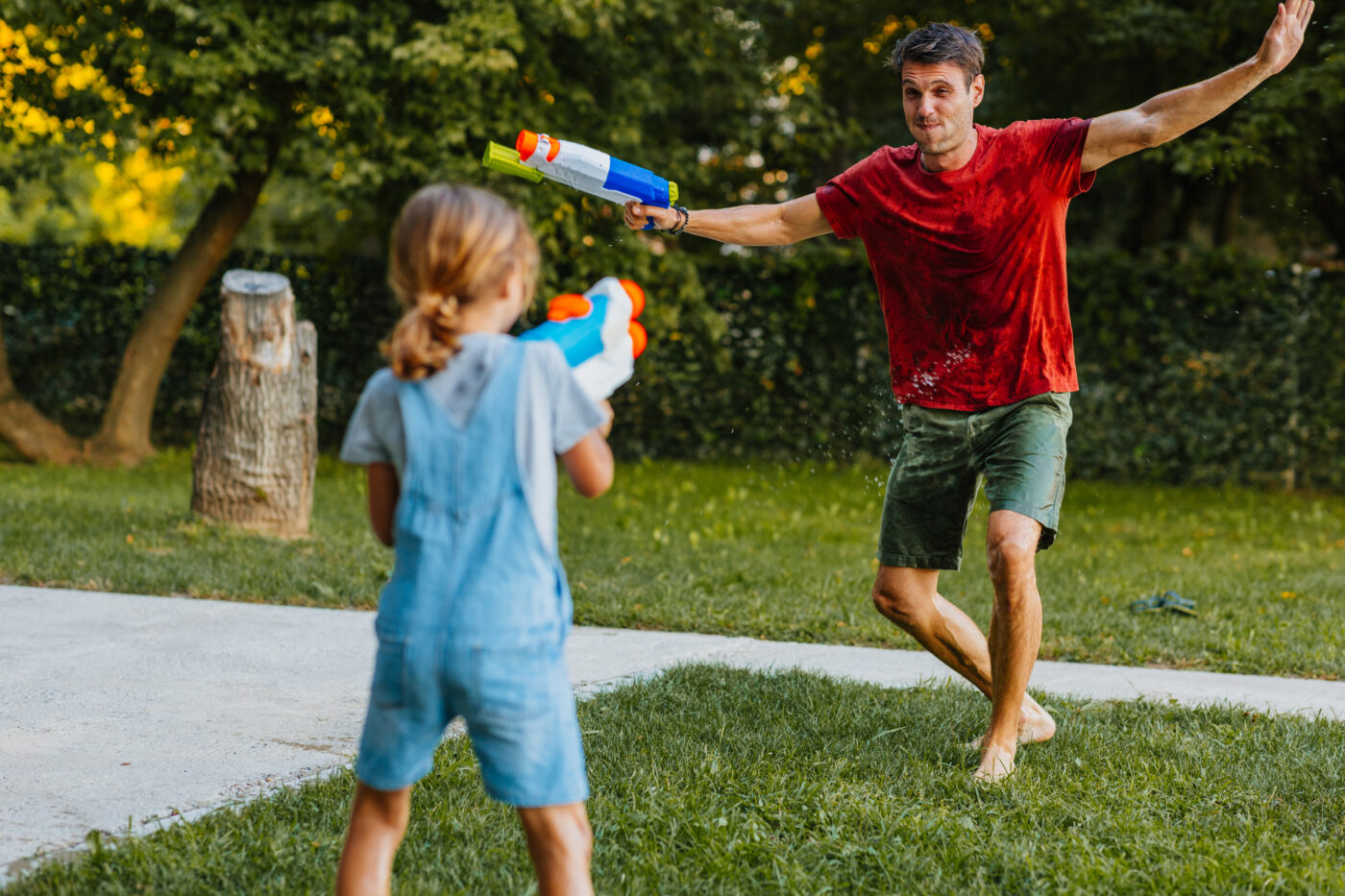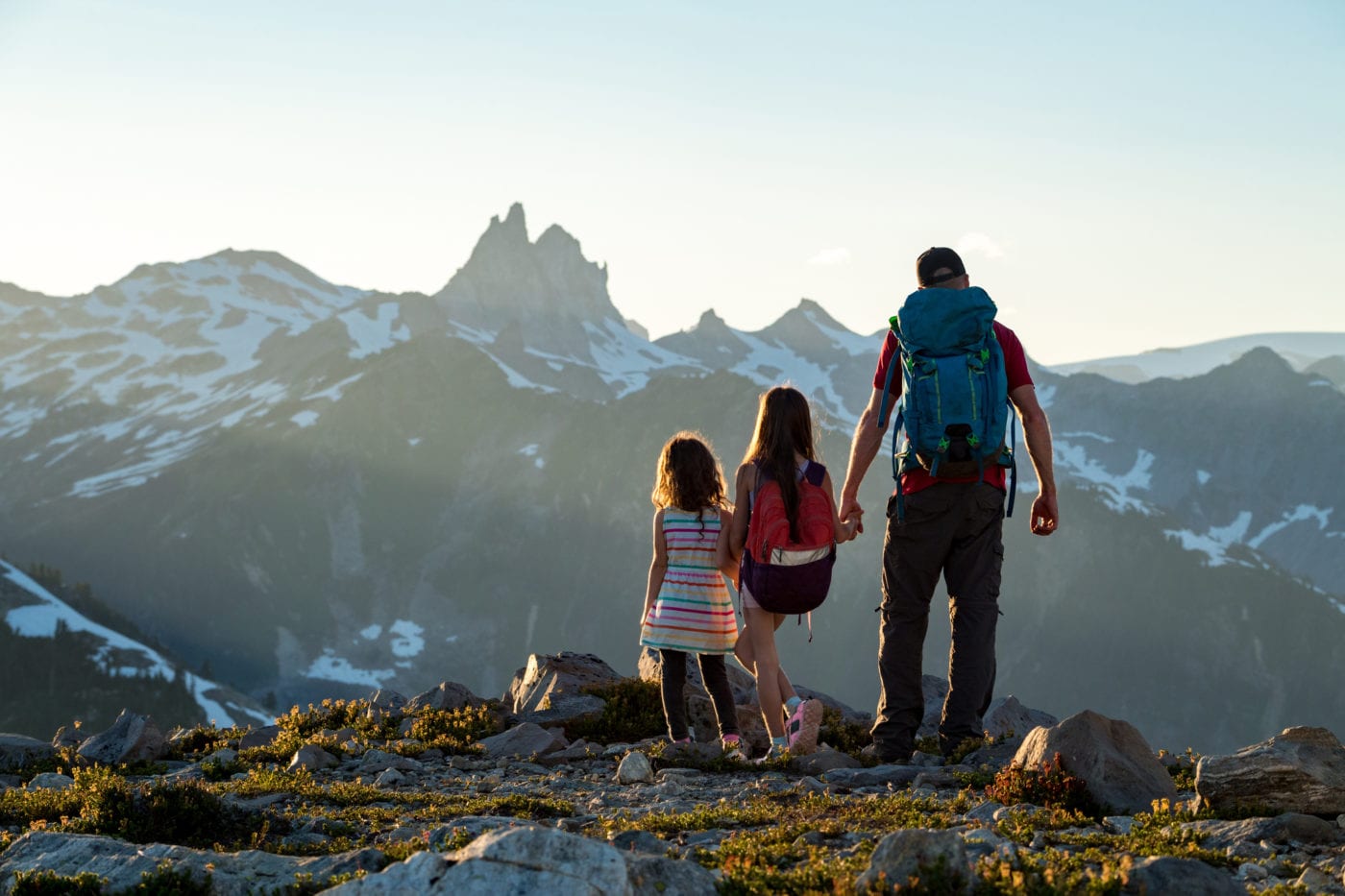Family camping can be a fun way to build memories, spend time with your family and enjoy the outdoors. Whether you are an experienced camper, or this is your first time pitching a tent, the following ideas will help make your adventure more creative, fun and even educational.
Planning Your Trip
Before you set out on your trip, think about what you want to do while at the campsite. You can look into staying at a campground, car-camping (setting up the tent next to your car), or backpacking. Depending on the geographical location and amenities of the campground, you could choose to go hiking, bicycle riding, canoeing, white water rafting or horseback riding. You may even want to look for guided nature tours, historical tours and junior park ranger programs. Also think about the time of year you will be camping and how that will affect the weather (both temperature and precipitation levels), the crowds, available activities and what you will need to pack. Be sure to make reservations for your campsite in advance, particularly if you plan on going during a holiday weekend. And if you are traveling, plan your trip so that you arrive at the campsite with plenty of time to set up your tent and gear before nightfall.
The following links will help get you started on finding a campsite:
Getting the Right Camping Gear
The links at the end of this section provide basic checklists of what you will need to take with you. If you don’t own camping equipment, consider borrowing the tent and other major gear from a friend. Be sure to check the amenities of your campsite before you leave. Some campsites have local stores, bicycle rentals and firewood for sale. Also, if you’re new to camping, practice setting up the tent in your backyard before you leave. It also wouldn’t hurt to set up your tent just to check for holes or frayed edges. Camper and writer Clark Norton warns, “Examine your tent for holes and other defects by setting it up in your yard and running the sprinkler on it. We once awoke… in a brand-new but leaky tent… lying in a rising swell of rainwater.”
The following links will provide you with an idea of what you will need on your trip. Keep in mind that your needs will vary according to the type of camping you will be doing (i.e. staying in a campground vs. backpacking), time of year and the ages of your children.
Cooking by Campfire
You can find a wide range of easy camping recipes online or in your local bookstore. Campfire cooking can be a fun, family activity and will give your family the chance to eat some creative dishes not normally served in the kitchen. Just be sure to store all food in containers, and if possible, in the trunk of your vehicle. Many animals have strong senses of smell, so don’t risk attracting wild animals by having opened bags of snacks or table scraps lying around.
And be sure to take along the fun camping snacks, as well. S’mores are the traditional ooey-gooey camping treat. The basic s’more consists of graham crackers, chocolate and a marshmallow. Food stylist Cynthia Caldwell offers some creative twists on making s’mores. Try adding peanut butter, or dipping it into chocolate sauce, using chocolate mints instead of plain chocolate, or using cookies instead of graham crackers. Before your trip, encourage your kids to think of creative ways they can invent their own s’mores and be sure to take along those extra ingredients.
Get your whole family involved in the packing process by making snacks together. You can make custom trail mixes, GORP (“good old raisins and peanuts”) and other quick snacks.
Prepare some basic dry dough mix before leaving home. While camping, you can use the dough to make fun animal-shaped bread, hot dogs in a blanket, cheese pockets and more.
Making Camping Fun and Educational
Check out these great nature sites before you go. You’ll find interesting facts, activities and more to help your kids explore the world around them. Also be sure to check into local educational programs at the campsite or nearby parks. Camping is a great opportunity to explain to your children the concept of limited resources, the importance of conservation and how to respect the world around them.
- National Park Service WebRangers
- Smokey the Bear Kids
- Discovery Kids
- Teach-nology:
- National Wildlife Federation
- World Wildlife Fund
- National Geographic
- Kids for Saving Earth
A large part of teaching your children how to respect nature is to model that behavior in your campsite. Be sure to leave the area just like you found it (or even cleaner). Never leave your litter behind — bring a trash bag with you. Be careful not to contaminate fresh water near your site. Do not dump your gray water (dirty water you’ve used for cleaning dishes, etc.) within 200 feet of a fresh water source; and try to buy soap that is biodegradable. If you are staying in the backwoods, make sure you dig holes that are at least six inches deep for disposing of human waste. And while observing nature is great, don’t interact with it — never feed wild animals, hassle animals by standing too close or by following them, or remove pieces of the landscape as a souvenir.
Other activities include a nature scavenger hunt, stargazing, craft-making and playing board games. Be sure to enjoy the outdoors by taking hikes or bicycle rides, or even venturing out on horseback or canoe.
To remember your trip, make a family scrapbook. Give each family member a disposable camera and have them document their adventures. Once you get home, ask everyone to write out their favorite things about the trip. Then compile the photos, descriptions and any other souvenirs (i.e. a park map or postcard) during your Family Night.
Keeping Camping Safe
Make sure you have the proper camping equipment allowed for your campsite, and you are aware of any campstove or fire restrictions that may be in place. And don’t forget to pack a first aid kit and other safety equipment such as extra water, flashlights, maps and a cellphone. The following links provide important safety tips as well as basic how-to’s on camping:
Camping can be a great experience for your family. Just be sure to keep things in stride when they go wrong and to take the time to just enjoy your family and the outdoors.








